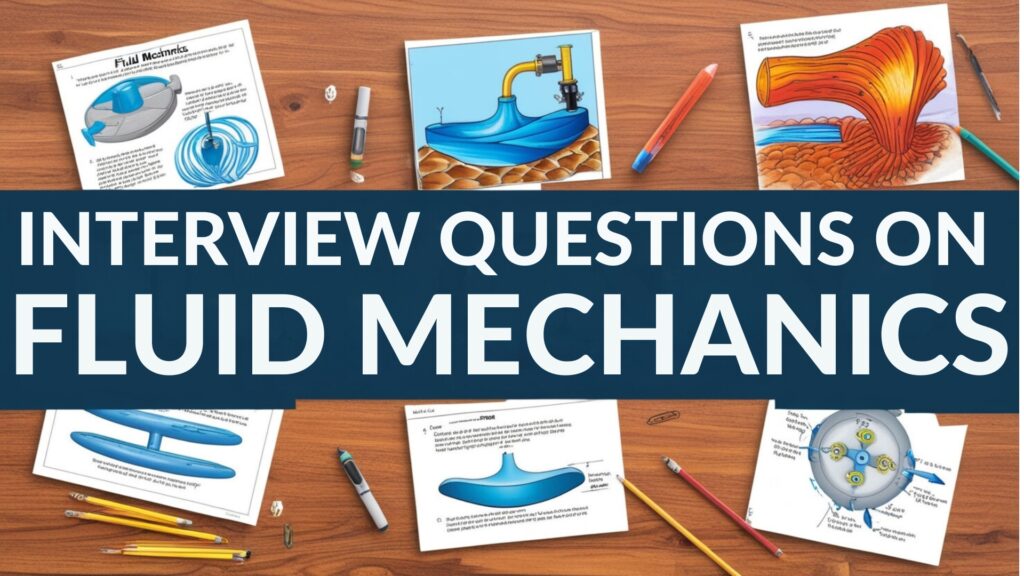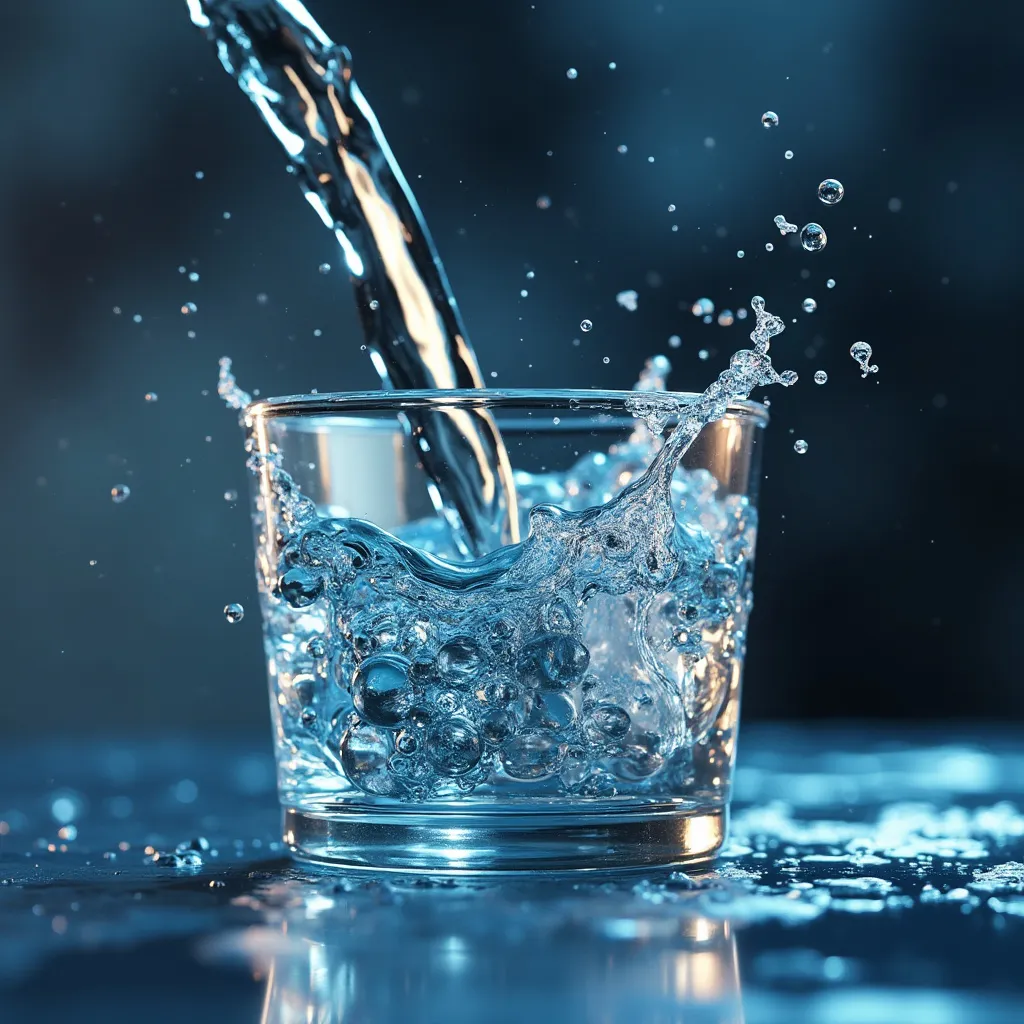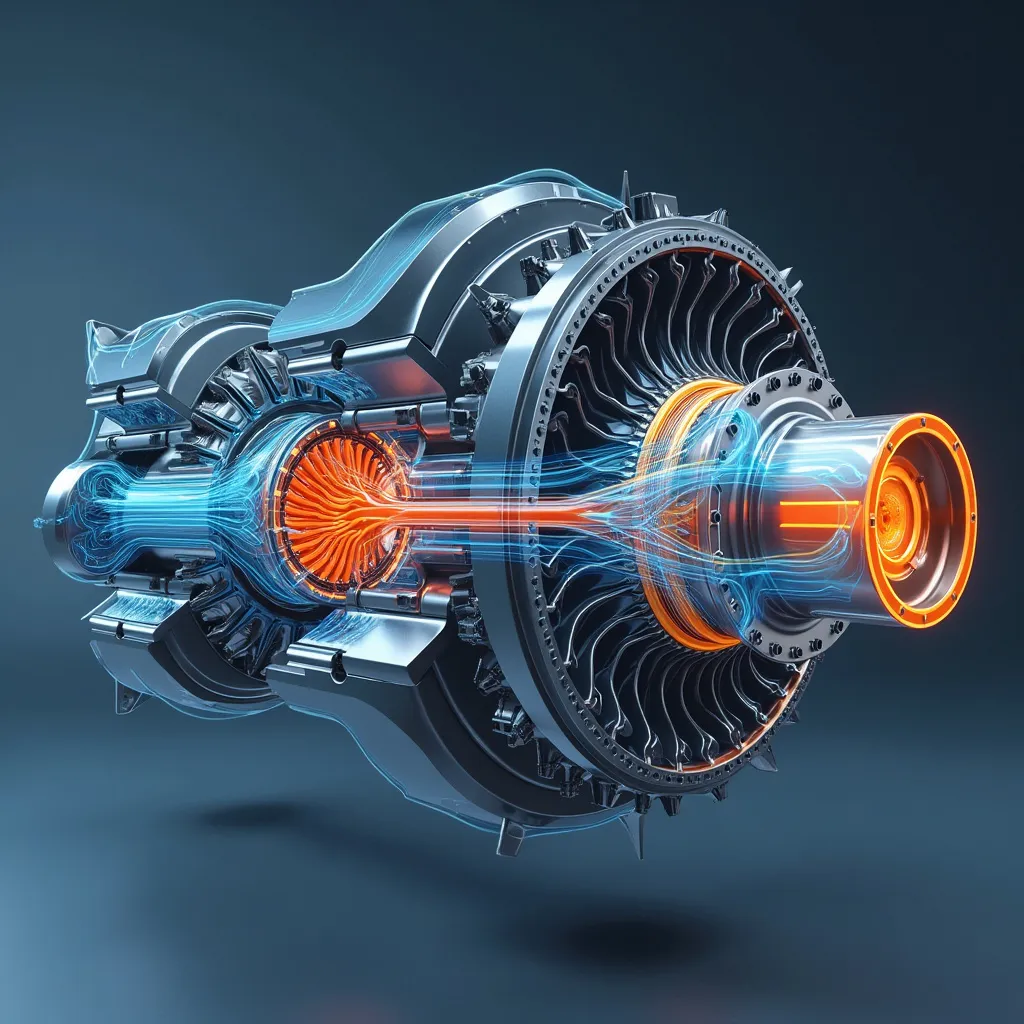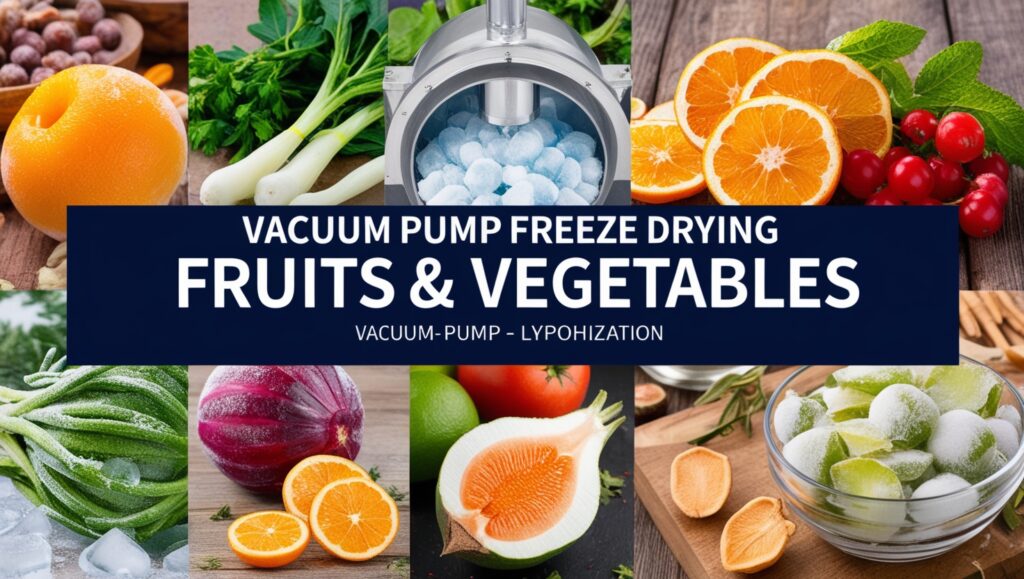
Mastering Fluid Mechanics: Essential Interview Questions and Answers for Engineers
Fluid Mechanics Interview Questions are a crucial part of the hiring process for many industries, including aerospace, chemical, and civil engineering. Fluid mechanics is a fundamental branch of engineering that deals with the behavior of liquids and gases under various conditions. Whether you’re a fresh graduate or an experienced professional, understanding fluid mechanics is crucial for many engineering roles. This comprehensive guide will help you prepare for fluid mechanics interview questions, covering essential concepts, practical applications, and expert insights.
It plays a crucial role in various fields, including aerospace engineering, chemical engineering, civil engineering, and environmental science. Understanding fluid mechanics is essential for designing everything from airplanes and ships to hydraulic systems and weather prediction models.
Key Concepts in Fluid Mechanics
Before diving into specific interview questions, it’s important to have a solid grasp of the fundamental concepts in fluid mechanics. Here are some key areas to focus on:
- Properties of Fluids
- Density
- Viscosity
- Surface tension
- Compressibility
- Fluid Statics
- Pressure
- Buoyancy
- Archimedes’ principle
- Fluid Dynamics
- Continuity equation
- Bernoulli’s equation
- Reynolds number
- Laminar and turbulent flow
- Conservation Laws
- Conservation of mass
- Conservation of momentum
- Conservation of energy
- Dimensional Analysis
- Buckingham Pi theorem
- Dimensionless numbers (e.g., Froude number, Mach number)
Understanding these concepts will provide a strong foundation for answering interview questions and discussing fluid mechanics applications.
Introduction to Fluid Mechanics
Fluid mechanics is the study of fluids (liquids and gases) and the forces acting on them. It’s a vast field with applications in various industries, including aerospace, automotive, chemical, and civil engineering.

Common Interview Question:
Q: What is the difference between a fluid and a solid?
A: The main difference lies in their response to shear stress. Fluids continuously deform (flow) when subjected to shear stress, while solids resist deformation and maintain their shape.
Fundamental Concepts
Understanding the basic principles of fluid mechanics is crucial for any engineering interview.
Properties of Fluids
Key fluid properties include:
- Density
- Specific weight
- Specific gravity
- Viscosity
- Surface tension
- Compressibility
Interview Question:
Q: Define viscosity and explain its importance in fluid mechanics.
A: Viscosity is a measure of a fluid’s resistance to flow. It’s crucial in fluid mechanics because it affects the fluid’s behavior, energy losses in flow systems, and the formation of boundary layers. Higher viscosity fluids require more force to move and can significantly impact the design of fluid systems.
Fluid Classification
Fluids can be classified as:
- Newtonian vs. Non-Newtonian fluids
- Compressible vs. Incompressible fluids
- Ideal vs. Real fluids
Interview Question:
Q: Explain the difference between Newtonian and Non-Newtonian fluids with examples.
A: Newtonian fluids are those whose viscosity remains constant regardless of the applied shear stress. Examples include water and air. In contrast, non-Newtonian fluids have a viscosity that changes based on the applied shear stress or shear rate. Non-Newtonian fluids can be further classified as:
- Shear-thinning (pseudoplastic): Viscosity decreases with increasing shear rate (e.g., ketchup, blood)
- Shear-thickening (dilatant): Viscosity increases with increasing shear rate (e.g., cornstarch in water)
- Bingham plastics: Require a minimum shear stress to begin flowing (e.g., toothpaste)
Understanding the difference is crucial in many industrial applications, as it affects fluid behavior in pipes, mixing processes, and other systems.
Fluid Statics
Fluid statics deals with fluids at rest and the forces they exert.
Key concepts include:
- Pressure and its variation with depth
- Manometry
- Hydrostatic forces on submerged surfaces
- Buoyancy and Archimedes’ principle

Interview Question:
Q: A rectangular gate 3m wide and 2m high is submerged vertically in water with its top edge 1m below the water surface. Calculate the total hydrostatic force on the gate and the location of the center of pressure.
A: Let’s solve this step-by-step:
- Calculate the pressure at the top and bottom of the gate: P_top = ρgh = 1000 × 9.81 × 1 = 9810 Pa P_bottom = ρgh = 1000 × 9.81 × 3 = 29430 Pa
- Calculate the average pressure: P_avg = (P_top + P_bottom) / 2 = 19620 Pa
- Calculate the total force: F = P_avg × Area = 19620 × (3 × 2) = 117720 N
- Calculate the center of pressure (measured from the top of the gate): y_cp = h/3 + (h^2) / (12 × (h + 2d)) where h is the height of the gate and d is the depth to the top of the gate y_cp = 2/3 + (2^2) / (12 × (2 + 2×1)) = 1.08 m
Therefore, the total hydrostatic force is 117.72 kN, and the center of pressure is 1.08 m from the top of the gate.
Fluid Dynamics
Fluid dynamics focuses on fluids in motion and the forces that cause their motion.
Key concepts include:
- Continuity equation
- Bernoulli’s equation
- Momentum equation
- Energy equation

Interview Question:
Q: Explain the significance of the Reynolds number in fluid dynamics.
A: The Reynolds number (Re) is a dimensionless quantity that predicts flow patterns in different fluid flow situations. It’s defined as the ratio of inertial forces to viscous forces within a fluid. The significance of the Reynolds number includes:
- Flow regime prediction: It helps determine whether the flow is laminar (Re < 2300), transitional (2300 < Re < 4000), or turbulent (Re > 4000) in pipe flow.
- Scaling: It allows for the scaling of fluid flow experiments between models and full-scale applications.
- Heat transfer: It’s used in correlations for heat transfer coefficients in forced convection.
- Drag coefficient: It’s crucial in determining the drag coefficient for objects in fluid flow.
The Reynolds number is calculated as: Re = (ρVD) / μ, where ρ is fluid density, V is fluid velocity, D is characteristic length, and μ is dynamic viscosity.
Dimensional Analysis and Similitude
Dimensional analysis is a powerful tool in fluid mechanics for:
- Reducing the number of variables in a problem
- Scaling experiments
- Developing correlations
Key dimensionless numbers include:
- Reynolds number
- Froude number
- Mach number
- Weber number
Interview Question:
Q: How would you use dimensional analysis to determine the factors affecting the drag force on an object moving through a fluid?
A: To use dimensional analysis for determining factors affecting drag force:
- List all relevant variables: Drag force (F_D), fluid density (ρ), velocity (V), characteristic length (L), dynamic viscosity (μ), and gravitational acceleration (g).
- Express the relationship using dimensional homogeneity: F_D = f(ρ, V, L, μ, g)
- Choose primary dimensions: Mass (M), Length (L), Time (T)
- Express each variable in terms of primary dimensions: F_D: MLT^-2 ρ: ML^-3 V: LT^-1 L: L μ: ML^-1T^-1 g: LT^-2
- Apply Buckingham Pi theorem to find dimensionless groups: Number of variables (n) = 6 Number of primary dimensions (m) = 3 Number of dimensionless groups (n-m) = 3
- Form dimensionless groups: π1 = F_D / (ρV^2L^2) (Drag coefficient) π2 = ρVL / μ (Reynolds number) π3 = V^2 / (gL) (Froude number)
Therefore, the drag coefficient is a function of the Reynolds number and Froude number: C_D = f(Re, Fr)
This analysis shows that the drag force depends on the fluid properties (density, viscosity), object characteristics (size), flow velocity, and gravitational effects.
Q: Describe the principle of similitude and its applications in fluid mechanics.
A: The principle of similitude is a fundamental concept in fluid mechanics that allows engineers to predict the behavior of full-scale systems based on experiments with scaled models. It states that two systems are similar if they are geometrically, kinematically, and dynamically similar.
Key aspects of similitude:
- Geometric similarity: The model and prototype have the same shape, differing only in size.
- Kinematic similarity: Fluid particles follow similar paths in corresponding time intervals.
- Dynamic similarity: Force ratios are the same between model and prototype.
Applications of similitude in fluid mechanics:
- Wind tunnel testing: Scaled models of aircraft, buildings, and vehicles are tested to predict full-scale aerodynamic performance.
- Ship design: Model ships are tested in towing tanks to evaluate hull designs and predict full-scale resistance and propulsion requirements.
- Hydraulic structures: Scaled models of dams, spillways, and other hydraulic structures are used to optimize designs and predict performance.
- Pipeline systems: Scaled models help in studying flow characteristics and pressure drops in complex piping networks.
The principle of similitude is implemented using dimensionless numbers such as the Reynolds number, Froude number, and Mach number. These numbers help ensure that the relevant force ratios are maintained between the model and the full-scale system.
Fluid Flow in Pipes
Understanding fluid flow in pipes is crucial for many engineering applications.
Key concepts include:
- Major and minor losses
- Moody diagram
- Pipe networks
- Pumps and turbines
Interview Question:
Q: Describe the factors that contribute to head loss in pipe flow and how they can be minimized.
A: Head loss in pipe flow is caused by two main factors:
- Major losses (friction losses):
- Due to fluid friction with the pipe walls
- Depends on pipe length, diameter, roughness, fluid velocity, and viscosity
- Calculated using the Darcy-Weisbach equation
- Minor losses (form losses):
- Due to changes in flow direction or cross-sectional area
- Caused by fittings, valves, bends, contractions, and expansions
- Calculated using loss coefficients
To minimize head losses:
- For major losses:
- Use pipes with larger diameters
- Choose materials with smoother internal surfaces
- Maintain lower flow velocities
- Minimize pipe length where possible
- For minor losses:
- Reduce the number of fittings and valves
- Use gradual rather than sudden expansions or contractions
- Choose fittings with lower loss coefficients
- Optimize pipe layout to minimize bends
- General strategies:
- Regular maintenance to prevent scaling or fouling
- Use of drag-reducing additives in some cases
- Proper pump selection and operation
By addressing these factors, engineers can design more efficient piping systems with reduced energy losses.
Boundary Layer Theory
Boundary layer theory is essential for understanding fluid flow near solid surfaces.
Key concepts include:
- Laminar and turbulent boundary layers
- Displacement thickness
- Momentum thickness
- Separation and transition
Interview Question:
Q: Explain the concept of boundary layer separation and its implications in aerodynamics.
A: Boundary layer separation is a phenomenon where the boundary layer detaches from the surface of an object moving through a fluid. It occurs when the fluid particles close to the surface lack sufficient kinetic energy to overcome the adverse pressure gradient.
Key points about boundary layer separation:
- Causes:
- Adverse pressure gradient (pressure increases in the direction of flow)
- Sudden changes in surface geometry
- Surface roughness
- Process:
- Flow near the surface slows down and may reverse direction
- The main flow separates from the surface, creating a wake region
- Implications in aerodynamics:
- Increased pressure drag
- Reduced lift on airfoils
- Formation of vortices and turbulent wake
- Stall in aircraft wings at high angles of attack
- Mitigation strategies:
- Streamlining object shapes
- Using vortex generators
- Boundary layer suction or blowing
- Trip wires to induce turbulence in specific locations
Understanding and controlling boundary layer separation is crucial for optimizing the performance of aircraft, vehicles, and other fluid-dynamic systems.
Significance in fluid mechanics:
- Aerodynamics: Affects lift and drag on airfoils, potentially leading to stall conditions in aircraft
- Hydrodynamics: Influences the performance of ships and submarines
- Heat transfer: Can significantly reduce heat transfer efficiency in heat exchangers
- Industrial processes: Impacts the design of piping systems, mixing vessels, and other fluid handling equipment
Engineers must consider boundary layer separation when designing aerodynamic and hydrodynamic systems to optimize performance and efficiency.
Turbomachinery
Turbomachinery deals with machines that transfer energy between a rotor and a fluid, including pumps, compressors, and turbines.
Key concepts include:
- Euler turbomachine equation
- Specific speed
- Cavitation
- Compressor and turbine staging

Interview Question:
Q: Describe the phenomenon of cavitation in pumps and its potential consequences.
A: Cavitation is a phenomenon that occurs in pumps when the local pressure in the fluid drops below its vapor pressure, causing the formation and subsequent collapse of vapor bubbles.
Key aspects of cavitation:
- Causes:
- Low inlet pressure (often due to high suction lift)
- High fluid temperature
- Rapid changes in flow velocity
- Process:
- Vapor bubbles form in low-pressure regions
- Bubbles collapse violently when they move to higher-pressure areas
- Consequences:
- Erosion of pump impeller and casing materials
- Reduced pump efficiency and performance
- Increased noise and vibration
- Potential for mechanical damage and failure
- Prevention and mitigation:
- Ensure adequate Net Positive Suction Head (NPSH)
- Proper pump selection and sizing
- Use of anti-cavitation devices (e.g., inducers)
- Maintaining appropriate fluid temperatures
- Regular maintenance and monitoring
- Detection:
- Characteristic noise (sounds like gravel in the pump)
- Vibration analysis
- Performance degradation
Understanding and preventing cavitation is crucial for maintaining the longevity and efficiency of pumping systems in various industries, including water treatment, chemical processing, and power generation.
Computational Fluid Dynamics (CFD)
Computational Fluid Dynamics is a powerful tool for analyzing and simulating fluid flow problems using numerical methods and algorithms.
Key aspects include:
- Governing equations (Navier-Stokes equations)
- Discretization methods
- Turbulence modeling
- Boundary conditions
- Validation and verification
Interview Question:
Q: Discuss the advantages and limitations of using CFD in engineering design processes.
A: Computational Fluid Dynamics (CFD) has become an integral part of many engineering design processes. Here are its advantages and limitations:
Advantages:
- Cost-effective: Reduces the need for expensive physical prototypes and experiments.
- Time-efficient: Allows rapid iteration and optimization of designs.
- Comprehensive data: Provides detailed information about flow fields, pressure distributions, and other parameters throughout the entire domain.
- Visualization: Offers powerful visualization tools for better understanding of complex flow phenomena.
- Flexibility: Enables testing of various scenarios and conditions that might be difficult or impossible to replicate experimentally.
- Scalability: Can handle a wide range of problem sizes, from small components to large systems.
Limitations:
- Accuracy dependence: Results are highly dependent on the quality of input data, mesh resolution, and chosen models.
- Complexity: Requires significant expertise to set up problems correctly and interpret results.
- Computational resources: Complex simulations can be computationally intensive and time-consuming.
- Model limitations: Certain phenomena (e.g., multiphase flows, combustion) may be challenging to model accurately.
- Validation requirement: CFD results should be validated against experimental data or known solutions when possible.
- Oversimplification risk: There’s a danger of oversimplifying complex problems, leading to inaccurate results.
Despite these limitations, when used appropriately, CFD is an invaluable tool in modern engineering design processes. It’s most effective when combined with analytical methods and experimental validation.
Real-World Applications
Fluid mechanics principles are applied in numerous industries and scenarios.
Some key applications include:
- Aerospace engineering (aircraft and spacecraft design)
- Automotive engineering (vehicle aerodynamics)
- Civil engineering (hydraulic structures, water distribution systems)
- Environmental engineering (pollution dispersion, climate modeling)
- Biomedical engineering (blood flow, respiratory systems)
- Energy systems (wind turbines, hydroelectric power)
Interview Question:
Q: How are fluid mechanics principles applied in the design of wind turbines for renewable energy generation?
A: Fluid mechanics plays a crucial role in wind turbine design for renewable energy generation. Here are some key applications:
- Blade design:
- Airfoil shape optimization using computational fluid dynamics (CFD)
- Calculation of lift and drag forces
- Design for optimal angle of attack
- Wake effects:
- Modeling wake interactions between turbines in wind farms
- Optimizing turbine spacing to minimize wake-induced power losses
- Turbine siting:
- Analysis of wind patterns and turbulence in potential locations
- Consideration of terrain effects on wind flow
- Structural loading:
- Calculation of aerodynamic loads on turbine components
- Fatigue analysis due to fluctuating wind conditions
- Power output prediction:
- Use of Betz’s law to determine theoretical maximum efficiency
- Modeling power curves based on wind speed distributions
- Noise reduction:
- Analysis of aeroacoustic noise generation
- Design modifications to minimize noise pollution
- Yaw control:
- Optimization of turbine orientation relative to wind direction
- Blade pitch control:
- Dynamic adjustment of blade pitch for varying wind conditions
- Boundary layer considerations:
- Analysis of atmospheric boundary layer effects on wind profiles
- Extreme condition modeling:
- Simulation of turbine behavior in storms or high-wind events
Real-World Applications of Fluid Mechanics
Understanding how fluid mechanics principles are applied in various industries can help you connect theoretical knowledge to practical situations during your interview. Here are some important applications to consider:
- Aerospace Engineering
- Aerodynamics of aircraft and spacecraft
- Propulsion systems (jet engines, rockets)
- Automotive Engineering
- Vehicle aerodynamics
- Engine cooling systems
- Fuel injection systems
- Civil Engineering
- Hydraulic structures (dams, canals, pipelines)
- Water treatment and distribution systems
- Biomedical Engineering
- Blood flow in the cardiovascular system
- Artificial heart valves and stents
- Drug delivery systems
- Environmental Engineering
- Atmospheric and oceanic circulation models
- Pollution dispersion studies
- Energy Sector
- Wind turbine design
- Oil and gas extraction and transportation
- Nuclear reactor cooling systems
Being able to discuss these applications and provide specific examples can demonstrate your ability to apply fluid mechanics principles to solve real-world problems.
Conclusion
Mastering fluid mechanics concepts and being well-prepared for interview questions can significantly improve your chances of success in securing a position in this field. By understanding the fundamental principles, staying current with advanced topics, and being able to apply your knowledge to real-world situations, you’ll be well-equipped to impress your interviewers and demonstrate your value as a fluid mechanics professional.
Remember that interviews are not just about showcasing your technical knowledge but also about demonstrating your problem-solving skills, creativity, and ability to communicate complex ideas effectively. With thorough preparation and a passion for the subject, you’ll be well on your way to excelling in your fluid mechanics interview and advancing your career in this fascinating and essential field of engineering.



